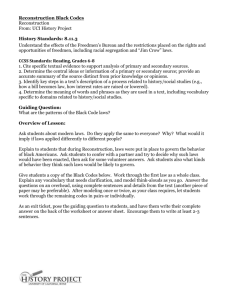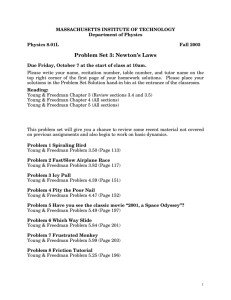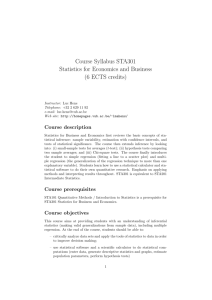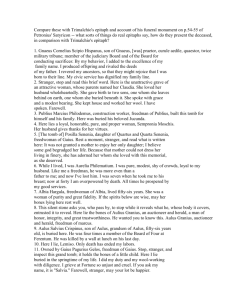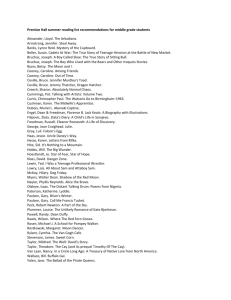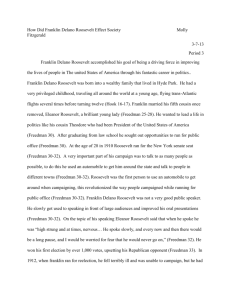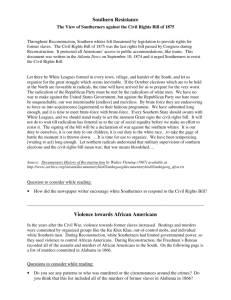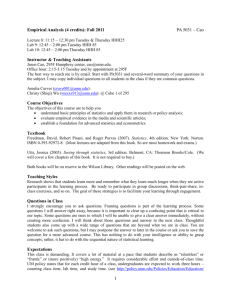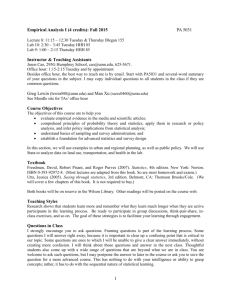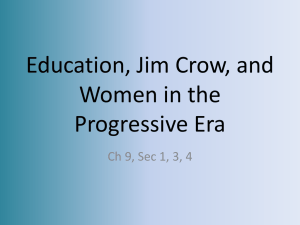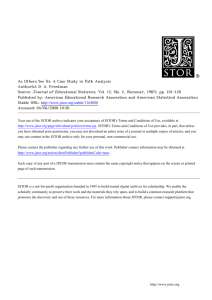Reconstructio Part II Jigsaw Activity Key
advertisement
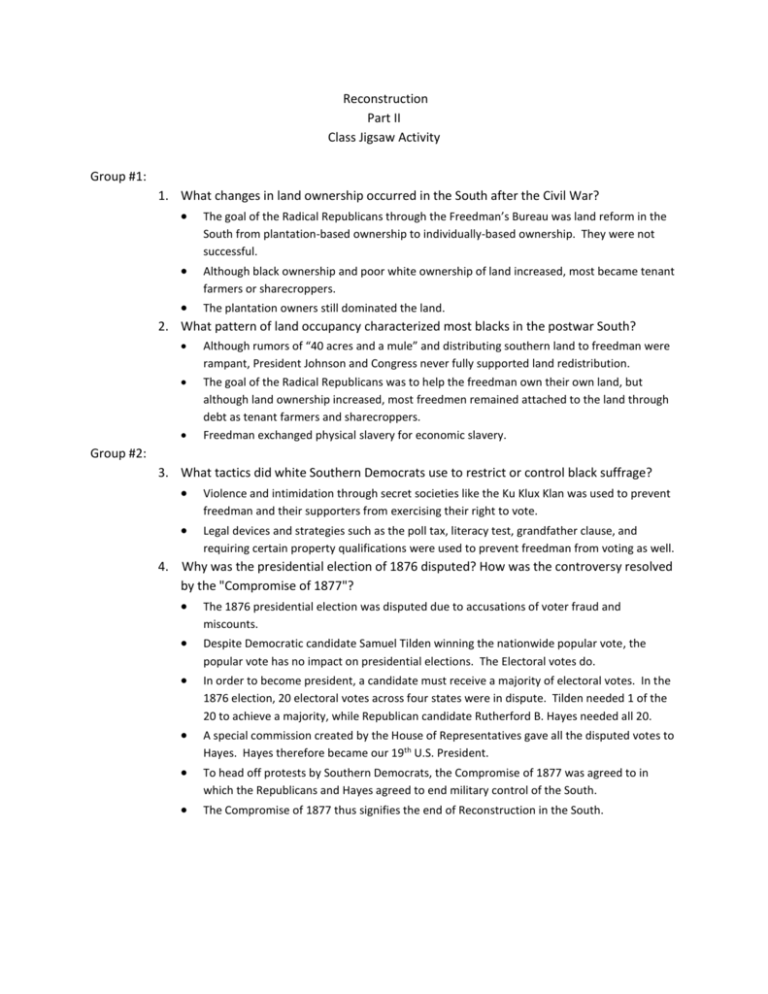
Reconstruction Part II Class Jigsaw Activity Group #1: 1. What changes in land ownership occurred in the South after the Civil War? The goal of the Radical Republicans through the Freedman’s Bureau was land reform in the South from plantation-based ownership to individually-based ownership. They were not successful. Although black ownership and poor white ownership of land increased, most became tenant farmers or sharecroppers. The plantation owners still dominated the land. 2. What pattern of land occupancy characterized most blacks in the postwar South? Although rumors of “40 acres and a mule” and distributing southern land to freedman were rampant, President Johnson and Congress never fully supported land redistribution. The goal of the Radical Republicans was to help the freedman own their own land, but although land ownership increased, most freedmen remained attached to the land through debt as tenant farmers and sharecroppers. Freedman exchanged physical slavery for economic slavery. Group #2: 3. What tactics did white Southern Democrats use to restrict or control black suffrage? Violence and intimidation through secret societies like the Ku Klux Klan was used to prevent freedman and their supporters from exercising their right to vote. Legal devices and strategies such as the poll tax, literacy test, grandfather clause, and requiring certain property qualifications were used to prevent freedman from voting as well. 4. Why was the presidential election of 1876 disputed? How was the controversy resolved by the "Compromise of 1877"? The 1876 presidential election was disputed due to accusations of voter fraud and miscounts. Despite Democratic candidate Samuel Tilden winning the nationwide popular vote, the popular vote has no impact on presidential elections. The Electoral votes do. In order to become president, a candidate must receive a majority of electoral votes. In the 1876 election, 20 electoral votes across four states were in dispute. Tilden needed 1 of the 20 to achieve a majority, while Republican candidate Rutherford B. Hayes needed all 20. A special commission created by the House of Representatives gave all the disputed votes to Hayes. Hayes therefore became our 19th U.S. President. To head off protests by Southern Democrats, the Compromise of 1877 was agreed to in which the Republicans and Hayes agreed to end military control of the South. The Compromise of 1877 thus signifies the end of Reconstruction in the South. Group #3: 5. Compare white and black expectations for Reconstruction with the actual results. Why were most black hopes dashed? What black gains were actually made? The expectations of white Southern Democrats was to regain political control of the South. They were able to in fact “redeem” the South as a result of the Compromise of 1877. The expectations white Northern Republicans and the freedman was to gain full and equal citizenship rights as well as the right to vote. Although political gains through the 14th & 15th amendments were made, Southern racism, discrimination, and “Jim Crow” laws prevented the freedman from exercising their rights throughout the late 19th and early 20th centuries. 6. How did the civil right cases of 1883 and Plessy v. Ferguson (1896) substantially negate the effect of the equal-protection clause of the Fourteenth Amendment? The 14th Amendment provided that citizenship rights could not be denied by race or gender. It included the equal-protection clause in which all people regardless of race or gender are eligible for the benefits of the law. The Civil Rights Cases of 1883 protected segregation practices by private institutions. Therefore, segregation of public places such as restaurants, trains, and theatres was allowed. The monumental Supreme Court decision in Plessy v. Ferguson (1896) established the “separate but equal” doctrine. In other words, segregation was legal as long as separate facilities were provided for whites and blacks that were equal. These Supreme Court decisions set the precedent for an era of segregation that existed throughout the late 19th and early 20th centuries and negated AfricanAmericans citizenship rights. Segregation policies would not be resolved until the Civil Rights Movement of the 1950s, 60s, and 70s. The Supreme Court decision in Brown v. Board of Education (1954) eventually overturned the “separate but equal” doctrine established by the Plessy decision. Group #4: 7. What strategies and legal devices did the Southern states use to evade the spirit of the Fifteenth Amendment? The 15th Amendment provided that voting rights could not be denied based upon race. It did not include gender, which upset women seeking the same right to vote. Southerners used secret society groups such as the Ku Klux Klan to intimidate and prevent freedman from exercising their right to vote. The legal devices used to prevent freedman from voting were the poll tax, literacy test, grandfather clause, and property qualifications. 8. What motivated the late nineteenth- and early twentieth-century crackdown on black voting? Southerners were motivated by the fear that freedman and their supporters would gain and maintain political control in the South thus changing the southern way of life. By using violence, intimidation, and legal devices, the Southern Democrats hoped to prevent freedman from voting and therefore re-establish political control in or “redeem” the South. Group # 5: 9. What was Booker T. Washington's prescription for black advancement as expressed in the "Atlanta Compromise" and elsewhere? Booker T. Washington favored a gradual approach to freedman gaining equal rights. Washington, an influential African-American leader of the late 19th century, believed that the freedman should be educated in trades rather than the classics in order to gain economic equality amongst whites. Through his “Atlanta Compromise”, Washington believed that white Southerners would be more willing to except gradual equality rather than immediate equality. 10. Describe the pervasive nature of "Jim Crow" laws. How was the system enforced, formally and informally? “Jim Crow” was a minstrel show character that depicted freedman and their culture in a derogatory manner. The name “Jim Crow” was attached to segregation laws that were common throughout the South during the late 19th and early 20th centuries. “Jim Crow” laws were enforced formally through law and informally by white citizen groups who resorted to lynching on many occasions.
